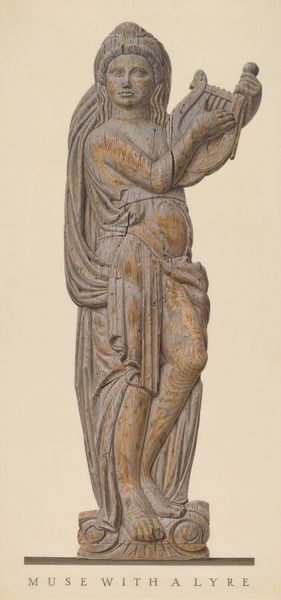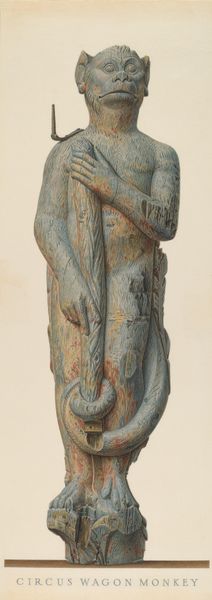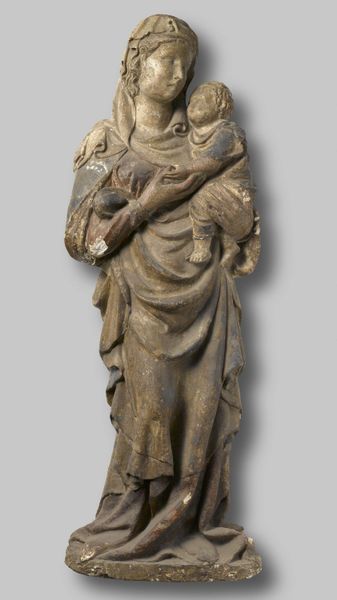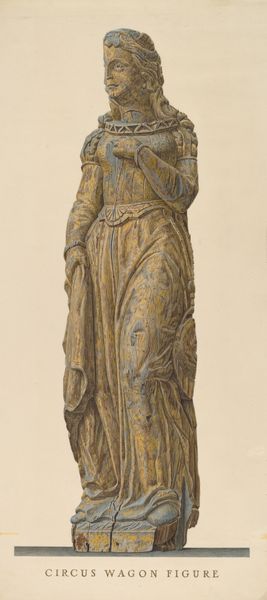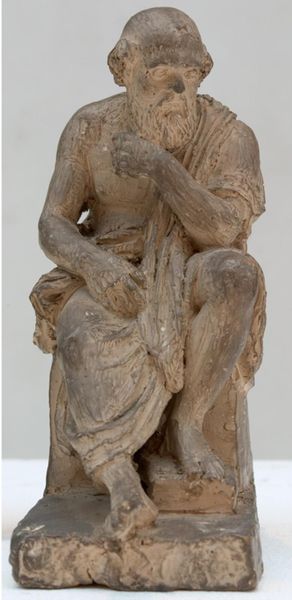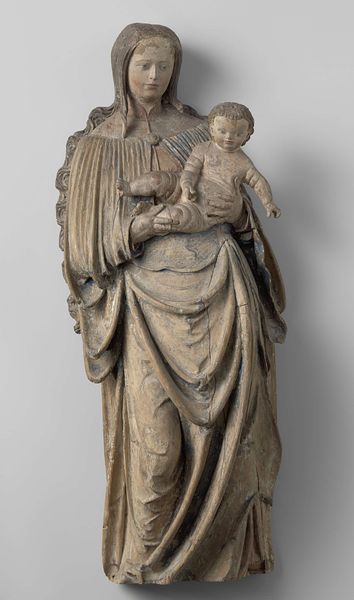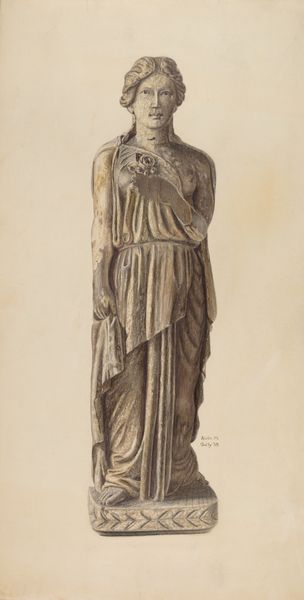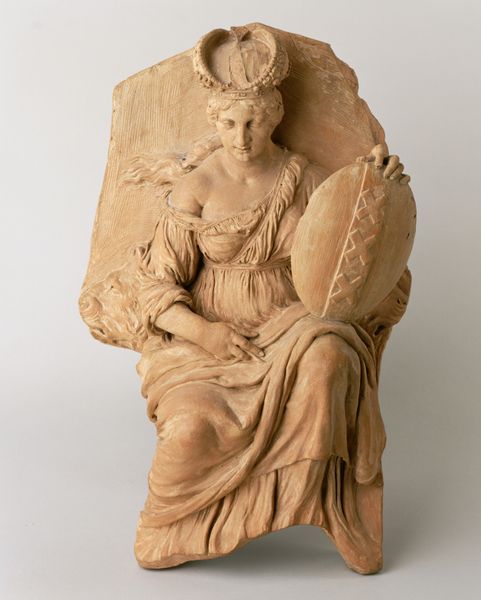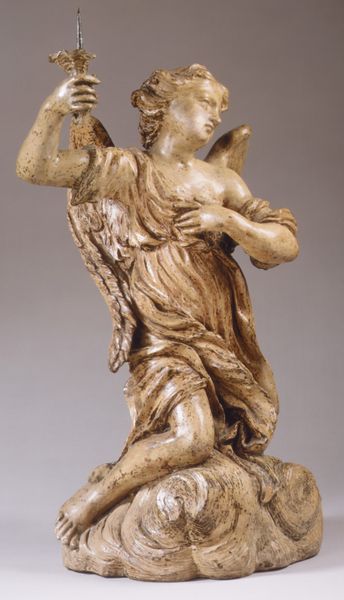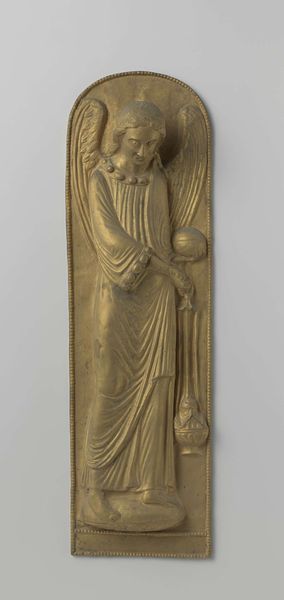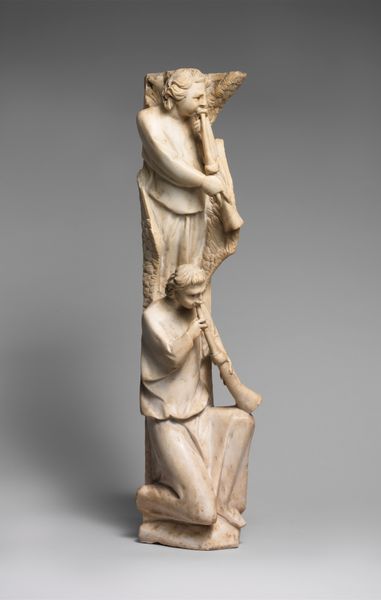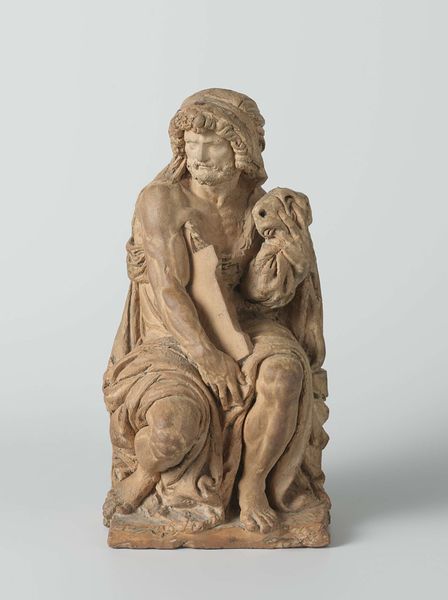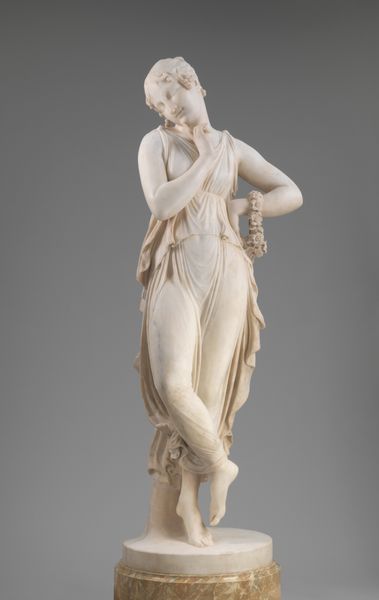
drawing, sculpture, wood
#
portrait
#
drawing
#
sculpture
#
classical-realism
#
charcoal drawing
#
figuration
#
sculpture
#
wood
#
charcoal
Dimensions: overall: 55.7 x 25.9 cm (21 15/16 x 10 3/16 in.) Original IAD Object: 49"
Copyright: National Gallery of Art: CC0 1.0
Curator: Here we have "Muse with a Scroll," a wood sculpture created around 1938 by John Matulis. The work presents a figure that clearly takes its inspiration from classical forms. Editor: You know, the first thing that strikes me is the texture. You can practically feel the grain of the wood, even in a photograph. There's this immediate sense of something grounded and almost earthy, yet the subject is, well, a muse. It creates this really lovely tension. Curator: Absolutely. Consider also the socio-economic context. During the late 1930s, the United States was still emerging from the Great Depression. Artists were often employed by the WPA and other government programs. "Craft" became valued, materials like wood were inexpensive and easily attainable. Editor: That's so interesting. So you're saying it's not just aesthetics, but availability dictating medium? It kind of strips away the romance of artistic inspiration. Which, honestly, I dig. Still, there is something undeniably thoughtful about the figure. Her pose suggests she's deeply contemplating something. The scroll might be a metaphor. Or maybe she’s just bored of reading. I can relate! Curator: Well, art making is always constrained by its means. Also, let’s consider the idea of a "muse." Whose muse is she, and for whom was this sculpture made? Given its scale, perhaps it was a study, or was intended as part of a larger, possibly architectural project? Editor: Hmmm... so the labor that went into carving this... It's something we rarely think about, isn’t it? The hours someone spent with the wood and the chisel… Makes you wonder what stories that wood could tell if it could talk, right? Where did it come from, what did it see before it was transformed into a pensive muse? Curator: Indeed, those material conditions and networks of production are essential for thinking about a work like this, moving beyond notions of individual genius and to something more holistic. Editor: Totally! It really forces you to look beyond the surface and consider the, you know, nitty-gritty of creation. Makes you appreciate it even more, I think.
Comments
No comments
Be the first to comment and join the conversation on the ultimate creative platform.
